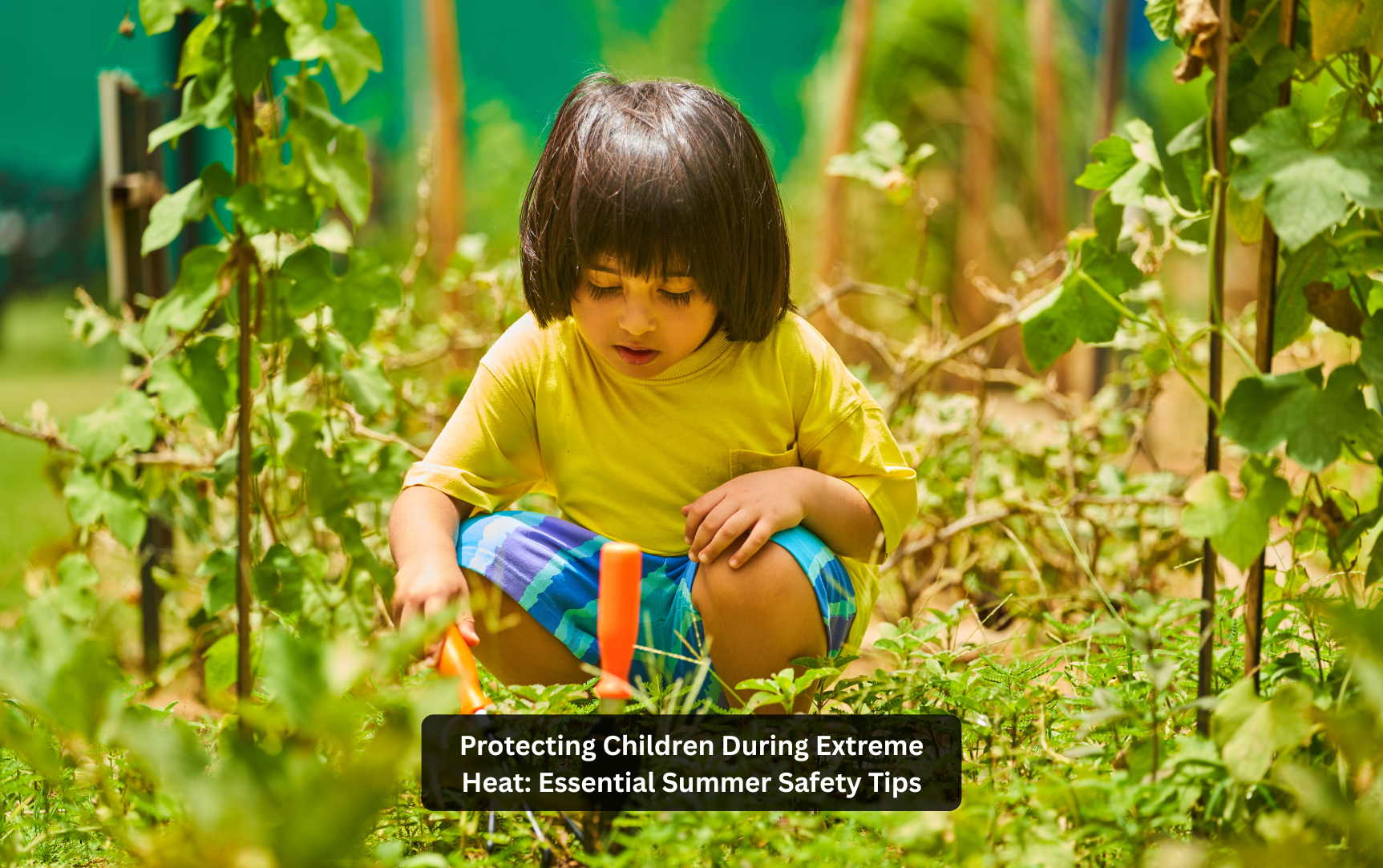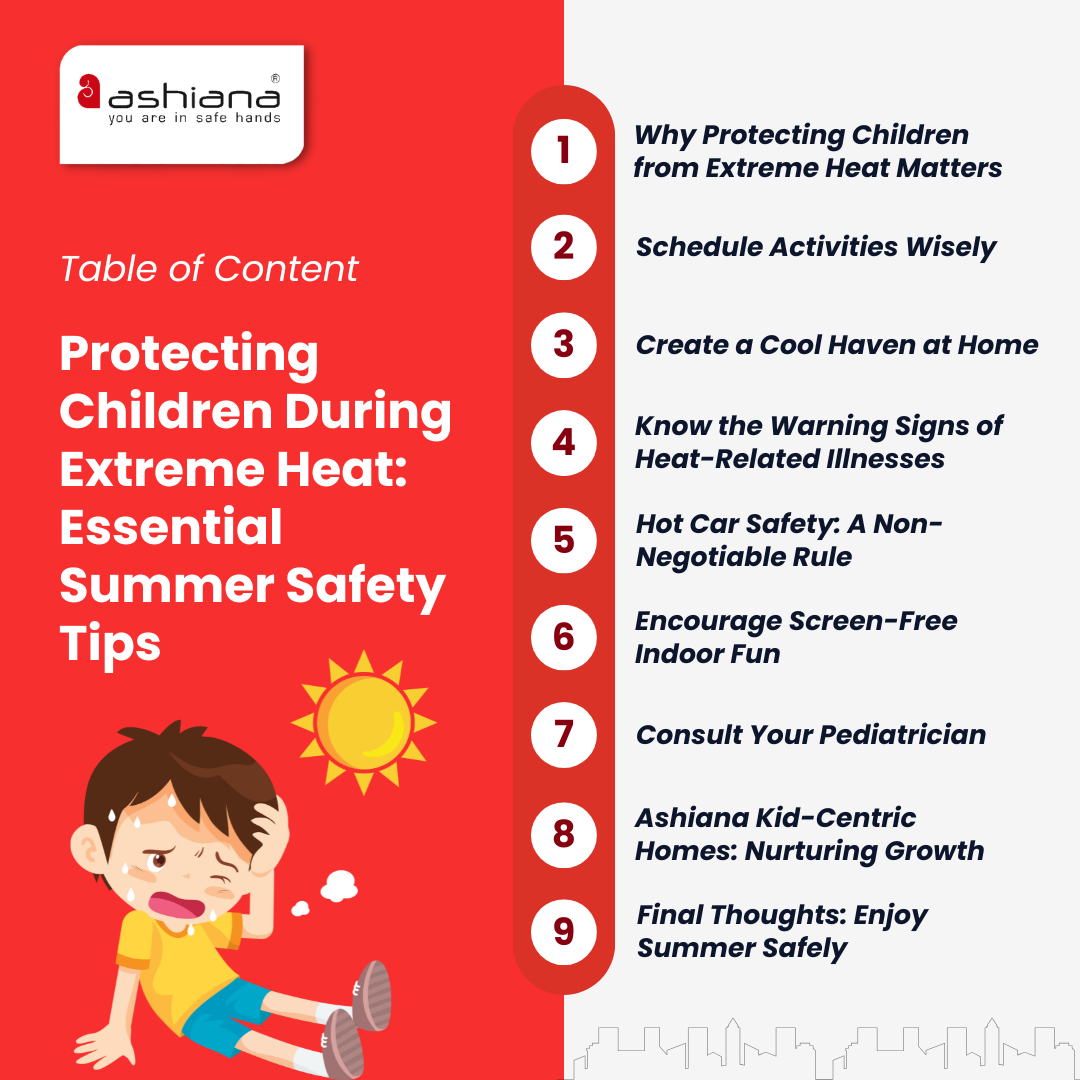
 Here’s a detailed guide to help you in protecting children from extreme heat while still enjoying the season to its fullest.
Here’s a detailed guide to help you in protecting children from extreme heat while still enjoying the season to its fullest.
The early signs of heat exhaustion in children include excessive sweating, fatigue, dizziness, muscle cramps, and nausea. It is important to address these symptoms immediately by moving the child to a cooler area, offering water, and resting. If symptoms worsen, seek medical attention promptly.
Encourage your child to drink water every 15-20 minutes, even if they don’t feel thirsty. Avoid sugary drinks and opt for water or electrolyte-based beverages. Carry reusable water bottles and consider freezing them overnight to keep the water cool throughout the day.
Yes, dress children in lightweight, breathable fabrics like cotton and opt for light-colored clothing that reflects sunlight. Ensure they wear hats and sunglasses for added UV protection. Apply sunscreen to exposed skin to shield them from harmful rays.
Ashiana, Ashiana Housing build homes. Homes surrounded by vast green spaces and fresh breeze. Homes cocooned in secured gated complexes. Homes where futures are forged and there are opportunities to grow. And Homes in environments brimming with healthy activity, trust and respect. At heart, we build communities with care.
Other posts by Ashiana
Join 1000+ of fellow readers. Get expert real estate knowledge straight to your inbox absolutely free. Just enter your email address below.